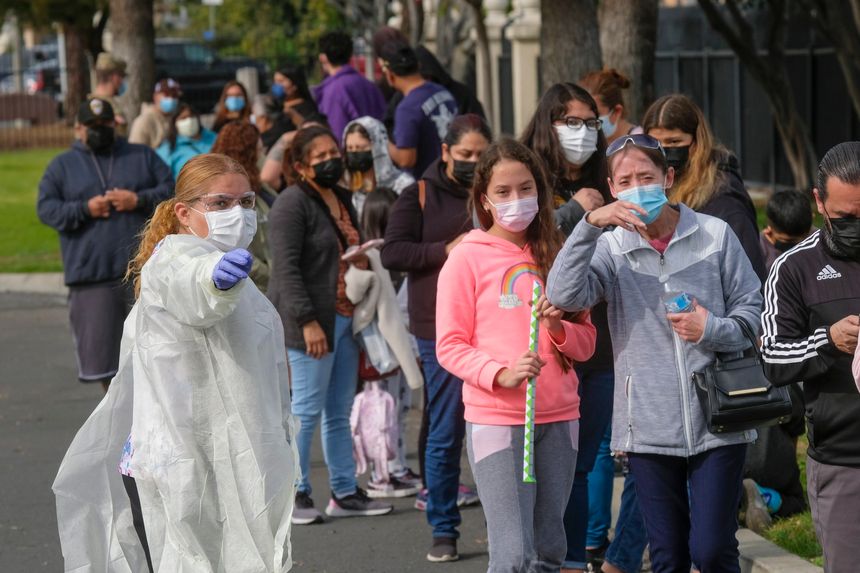Recently, a new COVID variant has been recognized and named by the World Health Organization – Omicron. At this point, people have become so exhausted with the global pandemic that many wonder whether we would run out of Greek letters someday if this trend continues. However, feelings of exhaustion aside, it is crucial for the public to be informed about this virus to effectively protect themselves and others around them.
According to the CDC, Omicron is more transmissive than Delta, the previous variant causing large rises in cases; but its effects, at least in those with two doses of vaccines, only seem to be mild. In people that tested positive for Omicron, specifically those that either received two doses of Pfizer/Moderna or one dose of Johnson & Johnson, the symptoms mostly range from mild to none. However, the CDC also stated that monoclonal antibodies treatment, a type of treatment effective for Delta, had shown ineffective for Omicron.
How is it affecting the nation now?
As Omicron began to spread around communities with its incomparable transmission rates, the healthcare system had been under pressure. With record-breaking new cases every day and every week, many hospitals reported being overwhelmed. Although Omicron doesn’t present a significant threat for those vaccinated, it can lead to severe symptoms or even deaths in those not vaccinated and with chronic medical conditions. These people comprise the majority of cases needing hospitalization, and death rates had also begun to rise, as shown in the figure below.
In addition to the pressure on hospitals, COVID testing also appears to lag behind. With the spread of Omicron, more and more people sought to be tested, significantly overwhelming the testing facilities, draining the amount of tests, and delaying the test results. In some areas, the time it takes to receive COVID testing results could be dragged out to one week or more. With the testing capacity challenged, the spread of Omicron has become more rapid. Under these worsening conditions, Biden’s approval rating had gone down once again. In the area of COVID response, his approval rating had dropped from 67% in March 2021 to 49% as of January 2022.
How will it affect us in the future?
In some U.S. areas, the reported cases seemed to show a trend similar to the peaking or post-peaking stages of other countries affected with COVID. However, health officials stated that the nation is not “at the same pace.” Different regions have seen Omicron outbreaks at different times, and while these regions present hope, the majority of the U.S. won’t see the peak any time soon, at least not in the following weeks. This could mean that the current pressure the healthcare system is under will continue to worsen, healthcare professionals noted.
In addition, the Supreme Court recently struck down a Biden administration requirement about testing or vaccinating in businesses with large numbers of employees. This decision represented a significant setback to Biden’s plan to slow the spread of Omicron. However, on the positive side for Biden and his advisors, the Supreme Court allowed a more limited version of the mandate that applies only to healthcare providers receiving federal financial support. Although only a small victory for the Biden administration, this decision still helps with his overall effort to quickly quench the threat posed by the new variant.
What measures should be taken?
Recently, the CDC finally acknowledged that cloth masks are not as effective as surgical masks, a major clarification applicable to the public. In addition, KN95 or N95 masks are highly recommended for healthcare professionals, as they prove to be 90% effective. Those with chronic conditions preventing them from getting vaccinated and more vulnerable to the virus should also consider acquiring surgical masks as soon as possible, or even KN95 or N95 masks if possible, for protection of not just self, but also others, as statistics have shown that vaccinated individuals that caught the virus are capable of transmitting it still.
In addition, another crucial piece of information is the surprising efficacy of the booster. In a recent study conducted under the collaborative effort of MGH, MIT, and Harvard, individuals that received a booster shot, Pfizer, Moderna, or Johnson & Johnson regardless, showed significantly improved neutralization against the new Omicron variant. Currently, the booster is supported for all people of age 16 and above, so this tool should be utilized by those eligible as soon as possible. In addition, to alleviate the pressure of testing facilities, new at-home testing kits are also being delivered at request, and they arrive within seven to twelve days after the placement of the order.
Although the new variant brought significant challenges to everyone, the government, the healthcare system, the general public, and much more, hope continues to guide us forward. With CDC’s recommendation of more effective masks, the surprising efficacy of the booster shot, and the availability of at-home testing, we will eventually walk out of this pandemic with responsibility, compassion, and perseverance.
Sources:

